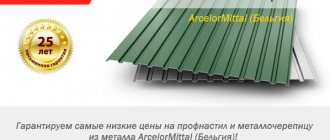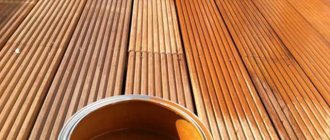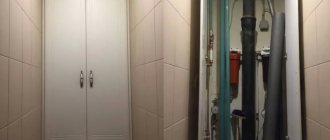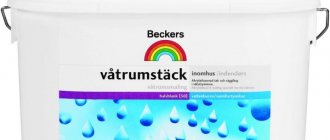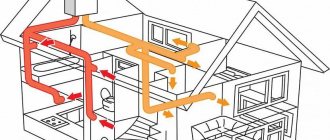Modern household kitchen appliances are distinguished by the presence of many additional functions. They, as manufacturers assure, are designed to make the life of housewives easier. Most of the options actually turn out to be very useful, but there are some that are either never used or used occasionally. Each additional “bell” increases the cost of the equipment. This, of course, forces the buyer to determine in advance which useful features are worth paying extra for. This is especially true for those who are purchasing a new stove or oven. Such equipment is simply irreplaceable in the kitchen and has a fairly high cost even without any additional options. The main point that every housewife must decide for herself when purchasing this appliance is whether she needs an oven with or without convection.
What is convection and why is this option needed?
The term “convection” translated from Latin means “delivery”, which fully reflects the purpose of this option. Convection is a heat exchange process of transferring internal energy along directed jets. Standard ovens that used to be installed in the kitchen were no different from each other. They were structures with a double bottom, inside of which there were burners. Trays with food were placed in ovens after heating.
The blush on baked goods or meat in such devices appeared due to the movement of heated air masses. This technology had flaws. Often the dish was not baked evenly. Some areas remained without any blush at all, while others, on the contrary, were burnt. In order not to spoil the dish, the baking sheet had to be rotated, which required skill and took time, and also required understanding in which part and how the oven heats less or more. Convection was also present in such ovens, but it was far from ideal. Some ovens worked great, while others, on the contrary, caused a lot of trouble. This heat exchange has been refined and modified.
conclusions
If you have the opportunity to pay extra and purchase a gas convection oven, do it. You will receive expanded functionality and the ability to use several baking sheets at the same time. If you need an inexpensive oven for infrequent use or for a rented home, standard options without convection are quite suitable.
Similar articles
10 best waffle irons
12 best kitchen sinks
10 best manufacturers of stainless steel pans
Heat transfer in modern ovens
Experienced housewives know that modern ovens have become much better than the old ones. This is due to a design change. Most modern models have two or more heating elements, rather than just one. They are located below and above. Thus, the movement of heated air occurs more evenly. Unfortunately, even this does not always save the baked goods from burning or, conversely, they will not be baked. If we compare old and new equipment, the process of movement of heated air masses is present in any oven. This is due to the fact that convection is a natural process. Heated air is always moving, but the quality and uniformity of cooking of baked and baked dishes depends on the direction and distribution of the flow.
Defects during installation
If there are many plastic windows in the house, but only one fogs up, the reason is most likely a defect in manufacturing or installation. But it should be remembered that such cases are extremely rare. Therefore, before making claims to the manufacturing company or installation specialists, it is necessary to exclude the possibility of other causes of window fogging.
If moisture accumulates inside the glass chambers, this is clearly a manufacturing defect or a violation of the window seal due to improper installation. In this case, the manufacturer or provider of window installation services is obliged to dismantle the defective double-glazed windows and install new ones at its own expense. But such situations are extremely rare. Low-quality products can cause irreparable damage to the company's authority, which is completely unacceptable in the conditions of fierce competition in the modern window market, when each company, in order to stay afloat, must be very responsible about its image.
Read how to choose the right plastic windows.
What is convection like?
Older models of ovens use free convection, while modern ones use forced convection. The first is natural and cannot fully ensure coverage of the entire usable area, so dishes are unevenly baked, and a golden crust is not always obtained. The second is implemented as an additional option. It assumes the presence of a special fan inside the oven structure, the blades of which accelerate the heated air. This process happens automatically.
Advantages and disadvantages
Convection is available in absolutely any oven, but it is different and has its own positive and negative properties:
- Free . Present in every oven and ensures quick heating of the oven. There is no need to overpay for this convection, since it is already provided by default. The downside is the long wait time until a certain temperature is reached, as well as uneven frying and baking. Additionally, free convection ovens can only cook one dish at a time.
- Forced . Present as an additional function to the free one and is more advanced. In models with forced convection, you can cook several dishes at the same time. In expensive brand ovens, nothing ever burns, and meat, fish and baked goods always have a beautiful golden crust. This system has one drawback - its high price.
Modern oven models have more advantages. For housewives who bake a lot, purchasing such an oven becomes a real salvation. Forced convection allows you to cook several different dishes at once, which saves time.
Features of using the equipment
Sometimes it happens that the purchased convection oven is not used in convection mode. It would seem that such an excellent function should attract any housewife and be used one hundred percent. In reality, this is not happening yet. The main reason is ignorance of the advantages and features of the function, and the need to make efforts to master it.
The difference in the quality of baking cookies in a conventional and convection oven. A - in a conventional oven at a temperature of 350°C; B - in an oven with a convector at a temperature of 350 ° C; B - in a convection oven at 325 ° C
The difficulty is that cooking in convection mode requires different timing. The cooking time in convection mode is a quarter less, with the exception of baking products in a closed form - in foil or a sleeve.
Therefore, almost all recipes need to be transformed - the baking time needs to be reduced by 25%. The same can be achieved by lowering the cooking temperature by a quarter. Not all housewives are ready for these innovations (working hard with translation and getting used to cooking in a new way).
To solve the problem and help owners of modern ovens, manufacturers have taken several paths:
- recalculated the cooking time for the main products and provided information in the instructions;
- took part in the release of cookbooks with recipes for convection devices;
- programmed ovens to automatically change timing/temperature when the convection function is turned on.
Unfortunately, gas ovens are not yet equipped with such abilities (automatic translation). Perhaps the situation will be corrected in the near future. But instructions, books and the Internet are available to any housewife.
The principle of operation of forced convection in the oven
A distinctive feature of this heat exchange process is the presence of a fan. Such a built-in device in modern ovens is called a convector. Thanks to the presence of this fan, hot air comes into motion. Convectors come in two varieties - simple and complex. The former perform only the blowing function, while the latter provide several options at once. Complex convectors, along with airflow, provide:
- additional heating due to the presence of a heating device such as a heating element;
- quick preparation of various dishes, since the device has a built-in amplifier;
- the ability to steam dishes, but only in those models with a steam generator.
This option is simply irreplaceable for many housewives. It is especially in demand in large families, since it allows you to simultaneously bake bread, bake meat, fish, vegetables and other dishes. If you plan to use the oven occasionally, an inexpensive model with natural convection is sufficient.
Comparative table of technical characteristics of oil and covector heaters
| Options | Oil heater | Convector heater |
| Economical | - Low economical. | +Approximately 25% more economical. |
| Heating time | + - Conventional models heat up for a long time, but those equipped with fans quickly. | —Heats the room for a long time. |
| Comfort to use | -Average. | +Both floor and wall models are more convenient. |
| Safety | —High surface temperature (but there are models with a protective casing); If the operating rules are violated, there is a risk of explosion. | +The surface of the convector is not subjected to strong heating; can be left unattended. |
| Life time | -Average | +Big |
| Environmental friendliness | —Due to convection, it raises dust particles | —Due to convection, it raises dust particles |
And based on the totality of all this, when deciding whether to choose a convector or an oil heater, you can clearly conclude: of course, a convector. Lightweight, compact, silent and safe, these heating devices are gradually replacing heavy, short-lived devices filled with hot oil from apartments and offices. So we can say that oil heaters have almost become a thing of the past in the matter of heating rooms. The only thing is that models of oil heaters equipped with fans are able to heat the room somewhat faster, but the process of heating its surface itself remains long. See below for detailed materials on choosing these heaters.
(no votes yet)
Forced convection in various types of ovens
The system of modern heat exchange with convectors is present in both gas and electric ovens. This leads to another question, whether this option differs among different types of kitchen appliances for baking and roasting. Modern ovens can be free-standing or built-in. The most popular models are those that are part of a kitchen stove. Free-standing ovens have a higher cost. It should be noted that convectors do not run on natural gas, since electricity is required to start the device. In other words, it is implemented on the auto-ignition principle.
Gas ovens
The demand for these kitchen appliances is due to the relative cheapness of fuel when compared with electricity. They are practically no different from conventional gas models, but the design includes a fan located in the rear wall. The main advantage of such ovens is the increased heating speed. The required temperature is reached much faster than in models without a convector.
Gas ovens, which have the forced convection option, are often equipped with steam blowing. The presence of such a function, of course, leads to an increase in the cost of kitchen appliances. Air blowing with steam allows you to prepare healthy dishes, so fans of healthy eating should take a closer look at these models. If the food is not steamed, then the option will not be used, and the money will be spent simply for another option.
What heats better, a convector or an oil radiator?
Significant differences in the operation of a convector from an oil radiator affect the thermal characteristics and thermal efficiency of the devices.
Thermal characteristics of oil radiators
The main advantage of an oil heater over an electric convector is its high heating temperature. If the radiator design has a fan heater, the room can be warmed up quickly enough.
The heater operates almost silently. The optimal solution would be to use a heating device in country houses. Maximum heating area 20-25 m².
Thermal efficiency of convectors
The convector is distinguished by a low heating temperature, no more than 60°C, creating a favorable microclimate. The device does not dry the air, but to warm up the room it will take longer than an oil radiator with a fan heater, but only if the heating element of the latter is heated to the required temperature. The performance of convectors is sufficient to provide heating of a room over 100 m².
The electric convector is distinguished by the best thermal characteristics and performance.
Electric oven
Ovens powered by electricity are considered much more powerful, which is completely true in reality. The maximum temperature level in gas models reaches 250 degrees. Electric ovens quickly heat up to 300 degrees. Such a difference inevitably leads to the question of why such a convector is needed.
A difference of fifty degrees cannot compensate for the uniform distribution of hot air masses. In order for them to completely cover the baked and baked foods, a convector is required. Without convection, you won’t be able to cook delicious meat and baked goods with a crispy crust. An electric oven can be free-standing, part of a combination or electric stove. In any case, this option will require more energy consumption. The choice of a specific variety depends not only on your own desires and preferences. Electric stoves consume a lot of energy, and if convection is turned on, the consumption increases even more. Therefore, such devices cannot be installed where the wiring is old.
